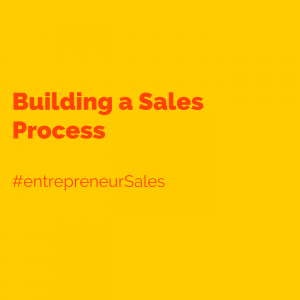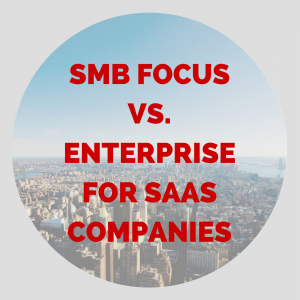 Over the last 2.5 years I have had the chance to closely observe over 70 startup teams for more than 6 months each (some a lot more) to find out which of them succeed (by their own definition) and which of them fail.
Over the last 2.5 years I have had the chance to closely observe over 70 startup teams for more than 6 months each (some a lot more) to find out which of them succeed (by their own definition) and which of them fail.
The thing that struck me 2 nights ago at the TIE dinner was a question that was asked by one of the solo founders – why do investors insist on having co founders if one of the biggest reasons for companies closing is “founder issues”?
If you look at the data from multiple sources about the biggest reason for failure in technology startups, I am struck by how high “co founder issues” comes up in the reasons for a startup folding.
After “no market need” and “ran out of cash” – which by the way is another way of saying there was no market need, the biggest reason was team and co founder issues.
Initially that struck me as odd. I mean, as investors, we keep telling entrepreneurs that we don’t fund solo entrepreneurs. Or that we invest in teams. Or that we like a well rounded hacker, hustler and hipster teams. Most investors have a bias against solo founders. We are prone to say – if you can get one person to join you as a co founder, why should an investor join you?
I have one theory around why we do what we do and say what we say. I am going to say it is a theory for now since I have not validated this and certainly can’t speak for all investors.
The reason is that the biggest reasons for failure (poor co founding teams) is also the biggest indicator of success.
Historically, great technology companies have 2 co founders.
Most investors pattern-match.
So, they tend to talk to 20 folks and form an “informed opinion”. If you look at startups in the technology space historically, the 2 co founders insight has borne out more often than not – Microsoft, Apple, Yahoo, Google, etc.
So, as investors we assume that data (that 2 cofounders is better) trump judgement (that sometimes a solo founder can be just as good – DELL, Amazon, eBay, etc.
So, the question is – why we do insist on having a 2 founder (or more) team than a solo founder?
The answer is fairly simple – investors, like entrepreneurs have biases, or a deviation in our judgement.
If you are a pattern-matching investor, with not much operating experience, then you will go by “best practices”. Then you find other ways to rationalize those decisions. For example – you will quote how startups are very hard and during the hard times you need someone (your co founder to keep your spirits up), or that you need folks with complementary skills to form a company, etc.
Those are largely true and maybe not rationalizations at all, based on the experience of many investors, but I have found that early stage (angel investors) tend to have these biases formed and opinions they have been “handed down” from seasoned investors, who have their own biases.
So, what does this mean if you are a solo founder and still need a “cofounder” since your investors are telling you they invest in teams.
Ideally, you should look for people you want to work with and have worked with before. Note, I did not say “you know well” – that’s necessary, but insufficient. If you worked with them that’s the ticket.
If you don’t have that person and keep getting feedback from investors you are trying to get on board that they don’t fund solo founder companies, what they are really telling you is that there’s other problems that make them not want to invest.
The problem might be that dont know the market, dont understand your product, or any number of other reasons.
That’s the real problem to solve as a solo founder, before you solve “let me get a cofounder” problem.



 Of the 13 weeks, his development team spent 2 weeks just implementing a sign up process, a user cancellation process, a payment process, a refund process, a login process, a password retrieval process, etc. Which he did not realize was the
Of the 13 weeks, his development team spent 2 weeks just implementing a sign up process, a user cancellation process, a payment process, a refund process, a login process, a password retrieval process, etc. Which he did not realize was the  This step is to ensure that you can know exactly what are the top 3 features you need to implement first which will make your product “must have” to solve the problem for your users.
This step is to ensure that you can know exactly what are the top 3 features you need to implement first which will make your product “must have” to solve the problem for your users. Typically in your first pass stick to under 7 screens would be my suggestion. That’s enough for a 45 second to 1 min “demo” and should give your users a feel for what the app will do. If they ask you for “one” feature that matters more to them than the ones you have, dont mock it up yet, but put it on your list until you have enough users interested.
Typically in your first pass stick to under 7 screens would be my suggestion. That’s enough for a 45 second to 1 min “demo” and should give your users a feel for what the app will do. If they ask you for “one” feature that matters more to them than the ones you have, dont mock it up yet, but put it on your list until you have enough users interested.

 Most every entrepreneur does things initially that don’t scale, and that’s okay to start. Pretty soon they realize that the things that made them successful enough to get initial sales and customers wont work for them to reach the next level at their startup.
Most every entrepreneur does things initially that don’t scale, and that’s okay to start. Pretty soon they realize that the things that made them successful enough to get initial sales and customers wont work for them to reach the next level at their startup. In the initial days of your SaaS startup, when you are doing
In the initial days of your SaaS startup, when you are doing  Over the last 2.5 years I have had the chance to closely observe over 70 startup teams for more than 6 months each (some a lot more) to find out which of them succeed (by their own definition) and which of them fail.
Over the last 2.5 years I have had the chance to closely observe over 70 startup teams for more than 6 months each (some a lot more) to find out which of them succeed (by their own definition) and which of them fail.




